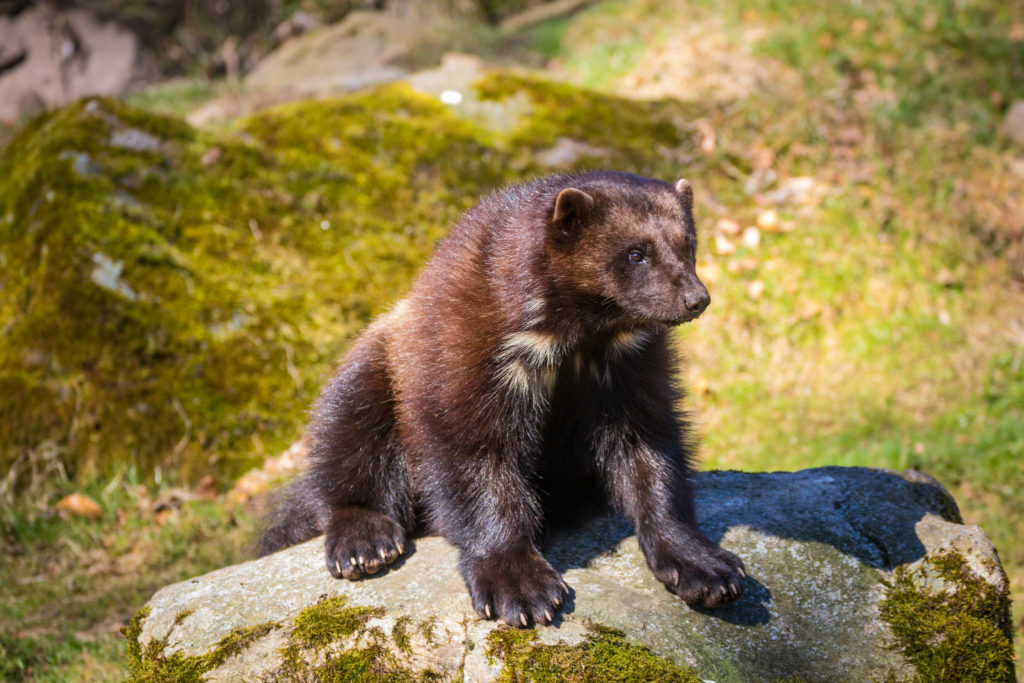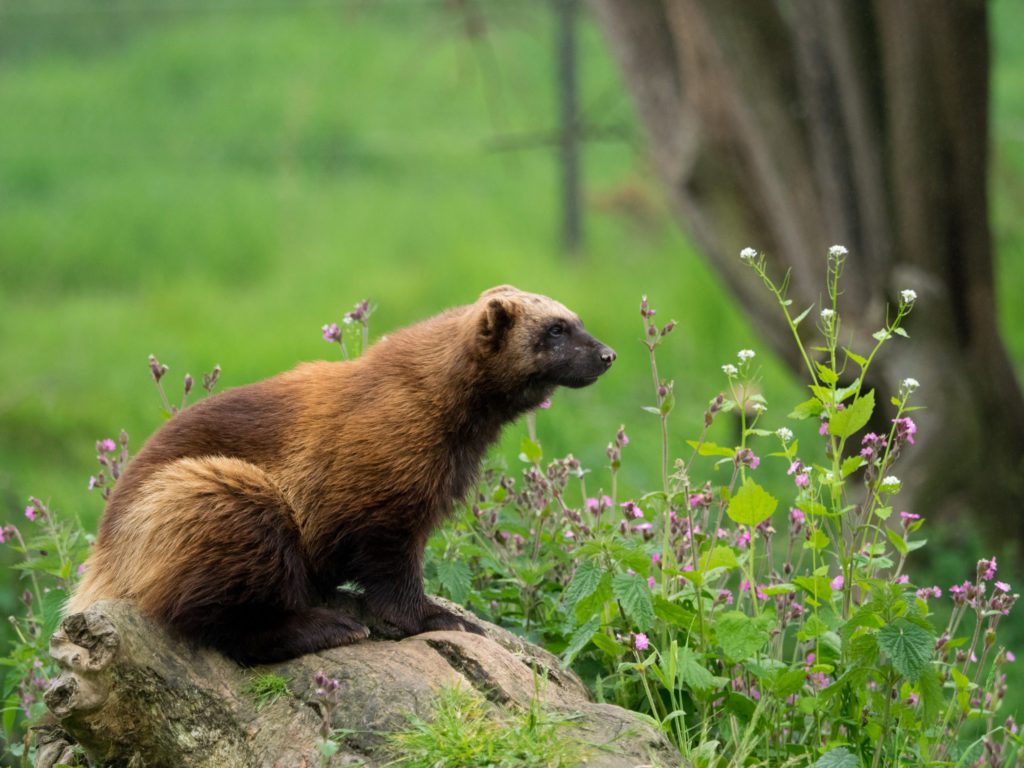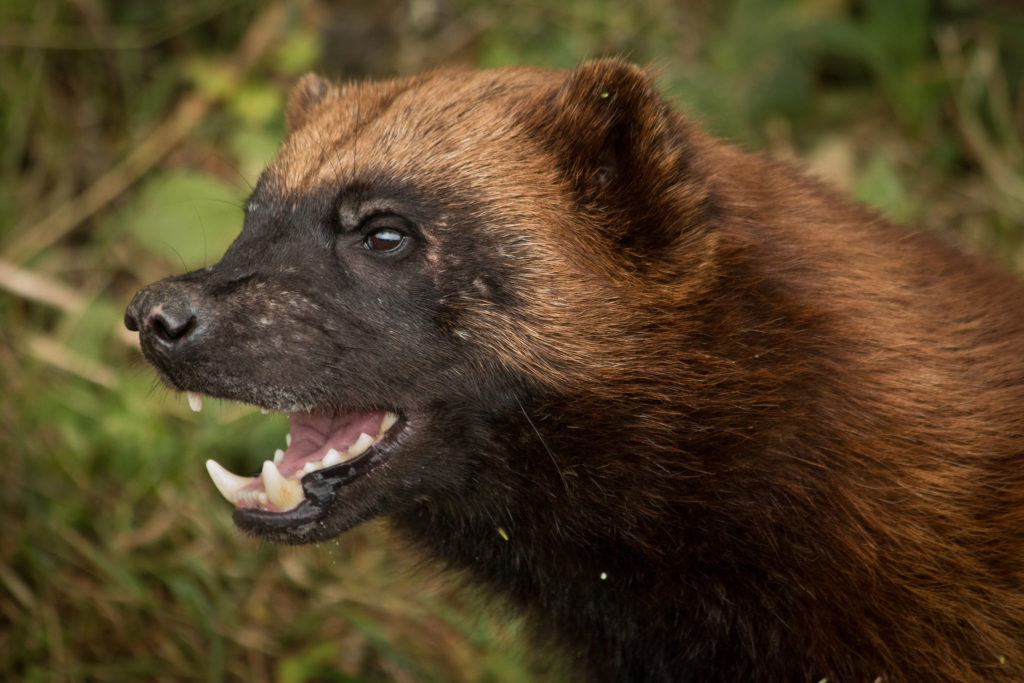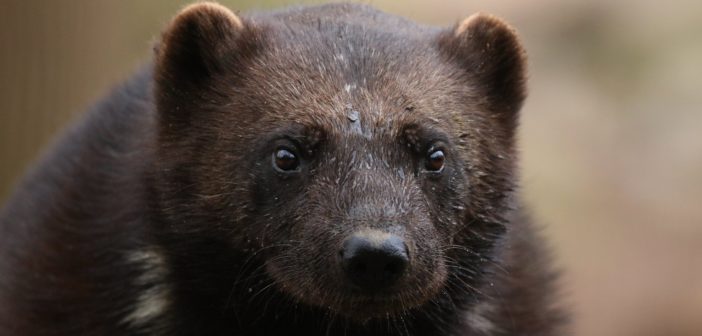Wolverines may be among the fiercest creatures alive — regularly challenging grizzly bears and crunching animal bones like peanuts. Yet biologists say melting snowpack caused by climate change could make it impossible for them to survive the next century without protections.
For years, Earthjustice has pushed to list wolverines under the Endangered Species Act, the most powerful legal tool we have to protect imperiled species. Despite a court’s determination in 2016 that refusing to list wolverines “borders on the absurd,” government regulators still haven’t given them proper protections.
Now, the Trump administration has proposed weakening the Endangered Species Act itself, at a time when scientists warn that one-eighth of the world’s species — including wolverines — are at risk of extinction because of human actions
While Earthjustice challenges the Trump administration’s ESA rollbacks in court, wildlife advocates like Doug Chadwick continue to raise awareness about the wolverines’ plight. In this interview, he talks about his encounters with wolverines in the wild, why their devilish demeanor gets a bad rap, and how we can protect them — and other top predators— in a changing climate.
WHEN DID YOU FIRST ENCOUNTER A WOLVERINE?
I was about 16, living in Alaska. I was underground in a precious metal mine and a fellow I met there looked like he had run into a Cuisinart mixer. It turns out he had trapped a wolverine, clubbed it in the head, and then began carrying it back to camp with its paws bound together and looped over his head. As you can probably guess, it turned out the wolverine wasn’t dead. I remember thinking, “A wolverine did that?”
I next encountered wolverines while I was studying mountain goats in Montana’s high country. They were lovely; they were free; and they covered the ground like nothing I’d ever seen. But they also tore up my tents and pulled every single goose feather out of my sleeping bags just to see if there was any meat to go with the feathers. I didn’t know what to make of them.

Later, I heard there was a research project on wolverines starting in Glacier National Park. I volunteered and started tracking wolverines. One day, as I was traveling with another researcher down a trail just below the Continental Divide (also known as the Crown of the Continent), I looked up and saw the researcher frantically waving at me. About 25 feet away was a mother wolverine with two of her young. They were standing in the middle of a wildflower bouquet lapping water out of a high mountain stream. Then they started playing together. I thought, “Wow, this is a pretty magnificent animal.” I was just sitting there on top of the world with these three rare creatures. My interest just grew from there.
WHY DO WE STILL KNOW SO LITTLE ABOUT WOLVERINES?
Until we had GPS technology, I don’t know anybody alive that could keep up with a wolverine for 24 hours. They’re not incredibly fast, but they just go constantly, day and night, and with brief intervals of rest in between. These are 30-pound animals that are only three feet long, and yet they have home ranges the size of a grizzly bear. And, they’re going up peaks and through passes and along cliff faces. I would brag about it for months if I went one-tenth of the distance they travel in a day.
They’re also strictly territorial, so you can’t fit very many of these wide-ranging animals into one spot. Even a place as big as Glacier National Park, which is 1,500 square miles, only has between 30 and 45 wolverines. That same park has an estimated 340 grizzly bears living in it. You can put an amazing number of bears into this space, but in that same great mountain expanse you can’t have a genetically varied, viable, long-term population of wolverines.
That tells you something important about wolverines, which is you need connections between existing wild lands for the population as a whole to endure over time. That’s a pretty startling concept, because it tells us we need to go about conservation a bit differently. We can’t just say, “Oh, we’ve set aside this mountaintop here and this little range of mountains over here, and so we protected nature.”
The wolverine reminds us of something that applies to almost all of the big, wide-ranging animals, which is that we must link these preserved areas together so genes can flow across the landscape. If the landscape is big and connected, it will work. If it’s a series of isolated little reserves, it won’t work.

WHAT DO WOLVERINES EAT?
Everything. They have very strong jaws, and they can even crunch bones. I have seen autopsied wolverines whose stomachs felt like they were full of gravel because they were full of bones.
During the winter, wolverines eat food that they have cached during the warm months when the big critters are up in the high country. It could be something they killed or something that a cougar or grizzly bear killed months ago. The wolverine carries off pieces of the carcass and stores it in snow banks during the summer, or puts pieces under boulders that have cold water running under them. It has food stored in all these natural refrigerators, and it can come back six months later in January or February and grab this stashed food.
Wolverines have this attitude where they will walk up to a grizzly that has a carcass they want and say, “That’s mine.” They start issuing this wolverine growl that sounds like a Harley Davidson mating with a chainsaw, and its real velociraptor quality stuff.
SO IT SOUNDS LIKE THEY’RE PRETTY FEROCIOUS?
Well, we make animals into what we want them to be. There are lots of stories about how wolverines attack people, but no one has ever been able to trace down a true story of that happening. But if you do corner one in a trap, they turn into the wolverine of myth. They’re like caged plutonium. They just keep coming at you, and they’re growling and they’ve got saliva coming out of their mouths.
People like dangerous critters, and carnivores are supposed to be naturally surly. But one time I was doing a story for National Geographic on endangered species, and I went to a place where they were breeding red wolves in captivity. Someone asked me, “Do you want to come and see something interesting?” Of course I said yes, and the guy leads me to about a half-acre pen where there are a ton of wolverines inside. He asks, “Do you want to go in?” And I’m thinking, “No! A herd of wolverines is not something I want to walk into.” But we did go in, and these guys are rolling around together like puppies and playing with each other in big furry balls and then they come scampering over to see us. They were tremendously inquisitive and social, and they explored us with their little nips and sniffs in our ears.
Right then, I knew there was a lot more to these critters than I’ve heard from all the old frontier tales. One reason I was eager to find out more about them was that, like so many animals, the more we know about wolverines, the more the old image changes. They turn out to have dimensions we never guessed, which is fascinating.

HOW DOES CLIMATE CHANGE IMPACT WOLVERINES?
Female wolverines require deep, persistent snowpack to raise their young from February through May, and they don’t tend to tolerate warm temperatures very well. That’s why you won’t find wolverines where the average summer temperature is really hot, even in high mountains.
As scientists model various climate regimes, they have predicted that wolverines are going to lose perhaps a third of their existing range in the U.S. by 2050. By the end of the century, they’ll have lost almost two-thirds of their existing range to hotter temperatures. That means if we’re going to keep these animals, they need every break we can give them.
Here is an animal that tells us we need to move past the 100-year old model of conservation, which is setting aside isolated parks here and there. Wolverines need these large, connected landscapes. Animals like grizzlies or wolverines didn’t arrive in little isolated museum-like reserves. They arose in big sweeping landscapes with an interchange of genes and interacting predator populations. By protecting the wolverine, you reinforce this next phase of conservation, which is thinking bigger and more connectedly.
IS IT HARD TO GET PEOPLE TO CARE ABOUT WOLVERINES WHEN THEY’RE SO ELUSIVE?
Definitely. That’s why I helped talk PBS into doing a special on them. It’s called Chasing the Phantom, and then I wrote a book, The Wolverine Way, to get the word out on these guys. I think it’s a shame to see a species dwindle away just because no one’s paying attention. They’re an inspiring critter. They’re one of the greatest beasts we have to share these ecosystems. They make the mountains taller. They make the whole place more alive, and we can’t lose animals like that just because we’re not paying attention.

ONE WOLVERINE YOU’VE MENTIONED IN YOUR WRITINGS IS M3. CAN YOU TELL ME ABOUT HIM?
Ah, my hero! M3 is the badass’ badass. He is a big male, chocolate-colored with bronze stripes on his side. As we tracked him, he kicked out an older male in the territory north of him and expanded his territory until it included a good part of Canada as well as Glacier Park. He was like the Genghis Khan of gulos. [Gulo gulo is the scientific name for wolverines.]
While doing all this, he climbed the highest peak in Glacier, which is 10,460 feet. And he completed the last vertical mile in 90 minutes, up a rock face that looks like it’s the world’s steepest, longest ski jump. People subsequently tried to do what they called the M3 route. They went about a third of the way up and bailed.
Other wolverines have done similar exploits. I really don’t know why they do this, but I know they do it regularly, and I know it’s a big part of their lifestyle to cross over avalanche slopes and rock walls and steep chutes. That’s one of the reasons I call them inspiring. If you can master the mountains like that, you’re my heroes.
HOW WOULD YOU DESCRIBE THE WOLVERINE’S APPROACH TO LIFE?
It’s basically climb everything, whether it’s trees, cliffs, or avalanche chutes; eat everything, whether it’s small, large, alive, or dead; and never back down, even from a mountain and least of all from a grizzly bear.
Wolverines live life as fiercely and relentlessly as anyone has ever lived. Personally, I can’t imagine living in a world where we give up animals like this. And discovering things about their family life, and their inquisitiveness, and their capabilities, it just makes it that much more rewarding. What are we saving nature for if we can’t keep critters like this?
Featured image: wolverines are underappreciated and underprotected. Image credit zoofanatic, CC BY-SA 2.0.





